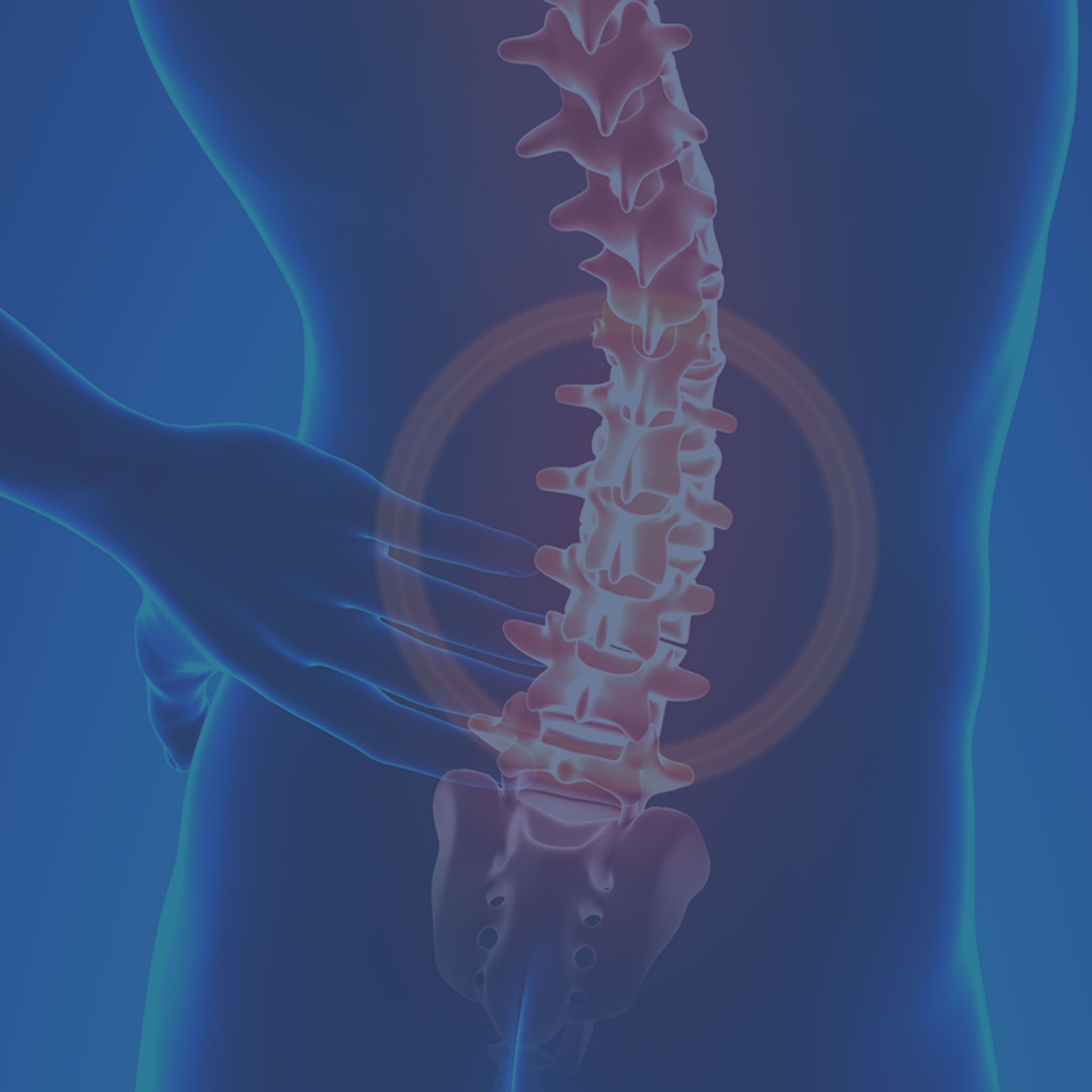The spine is made up of individual vertebra separated from each other by rubbery, shock absorbing discs. These discs have a strong outer layer (the annulus fibrosus) surrounding a soft gel centre (the nucleus pulposis). The outer annulus is like a tyre that is “pumped up” by the high pressure of the gel-like nucleus. The pressure of the gel is maintained by its large, electrically charged molecules (proteoglycans) that attract and bind water molecules.
Graceful Ageing
In the best scenario, discs only very gradually become less rubbery with advancing age. The fibrous tissue of the annulus becomes less supple, slowly reducing spinal mobility; whilst the “tyre” pressure of the nucleus gently lowers, decreasing its shock absorption ability.
Disc Degeneration starts with a "flat tyre"
Disc degeneration is common, being evident in 50% of patients in their 30’s; with at least 50% of a person’s risk being related to their genetics. Disc degeneration usually starts with a traumatic injury to the disc that leads to a loss of pressure in its nucleus (the “flat tyre”). This may occur through a weakness into the outer wall of the disc (a radial tear or even a full disc prolapse), which allows the nucleus to bulge out sideways. This is more likely to happen in the lower lumbar spine (L4-5 or L5-S1) and tends to be associated with excessive bending or twisting. Alternately, it may occur when the top or bottom of the disc (vertebral end plate) gives way where it attaches to the main part of the vertebra (internal disc disruption).
This is more common in the upper lumbar spine and is associated with compressive injuries (like falling heavily on your backside).
In both of these situations, the pressure in the disc drops and the body responds with enzymes that further break down the proteoglycan molecules of the nucleus. Although the adult body can partially “patch” tears in the outer annulus, it doesn’t readily produce new proteoglycans to “reinflate” the disc. MRI scans are fairly good at showing up disc prolapses, but can only find circumstantial evidence to diagnose radial tears/internal disc disruption. It is thought that disc prolapses and internal disc disruption can be a cause of some back pain, probably when nerves grow abnormally into the disc.
Long term changes related to the flat tyre
The loss of pressure in a disc affects the way that its spinal joint works. There tends to be a loss of disc height, which reduces the spacing between the vertebra on either side. The deflated disc also moves around more freely (segmental instability), further increasing the rate of wear and tear. Over a period of years, a number of physical changes can tend to occur in response to the loss of pressure and height in a disc. These include:
Spondylosis – bone spurs (osteophytes) form around the margin of the top or bottom of the main part of the vertebra.
Facet joint arthritis – facet joints are small, paired joints behind the main part of the vertebra that guide movement and prevent excessive motion - like “trainer wheels”. When the disc deflates and narrows, this leaves the facet joints taking much more weight than they’re designed to. This can lead to accelerated wear and tear / arthritis. As part of this process, the facet joints tend to get larger.
Disc bulging – the outer wall of the disc tends to bulge out into the vertebral canal.
Ligament bulging – a strong elastic ligament (the ligamentum flavum) runs inside the back of the spinal canal. When the gap between two vertebra is reduced, there is a tendency for an older ligament to fold on itself. This can reduce the room available for the spinal cord to run through the spinal canal.
Possible long term symptoms
The potential consequences of disc degeneration and its related adaptations usually take years and decades to become evident. Most patients with disc degeneration do not have any symptoms associated with it and there is only a loose correlation between the severity of degeneration and the likelihood of problems. Even when a patient with spinal degeneration has back pain, it may not be due to their spinal degeneration. The eventual consequences of spinal degeneration may include:
Pain from arthritic facet joints Can respond to a procedure to disconnect their nerve supply (radiofrequency neurotomy).
Pain from discsSymptoms may be assisted by physical treatments that improve alignment etc. Disc replacement surgery can be helpful but it is difficult to predict who will benefit. All spinal surgery carries risks and a small percentage of patients will end up worse off.
Spinal Canal Stenosis – The combination of all of the above changes can lead to narrowing of the main spinal canal with compression of the spinal cord.– Can cause pain, numbness and even weakness of the lower limbs.– Symptoms often fluctuate and can respond to an epidural steroid injection. Surgery is sometimes required, but mainly for lower limb symptoms (not back pain).
Foraminal Stenosis – Narrowing of the side canals that the spinal nerve roots exit through at each level.– Can irritate or compress the spinal nerve, causing pain and numbness into limbs.– Symptoms may respond to injection of steroid around nerves (nerve root sleeve block) or rarely surgery may be required.
Recommendations for patients with disc changes / degenerations
Don’t think that you are too special – most people end up with some degree of degeneration.
• Stay active – inactivity is the most dangerous thing you can do!
• Avoid high risk / high impact activities - E.g. jumping from a height, heavy leg presses.
• Maintain good posture with core activation – Pilates is one good approach to this but any whole-of-body activity generally helps.
• Maintain optimal weight.
• Don’t smoke.
• Maintain good nutrition (including low sugar and high omega-3’s (fish oil)).
Dr. Chris Homan
MBBS FRACGP FACRRM DRANZCOG PGDipMSM(Otago)

